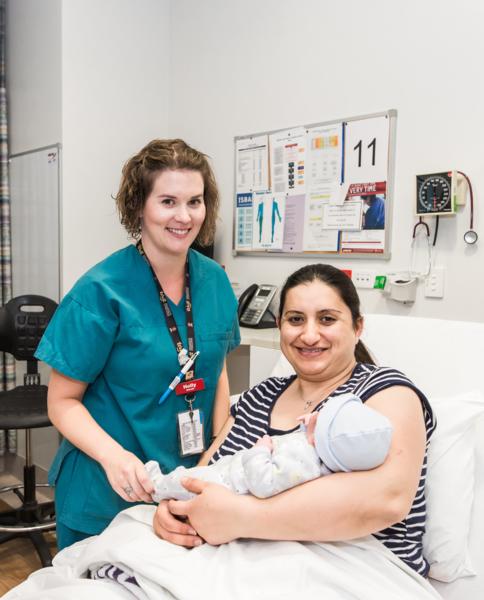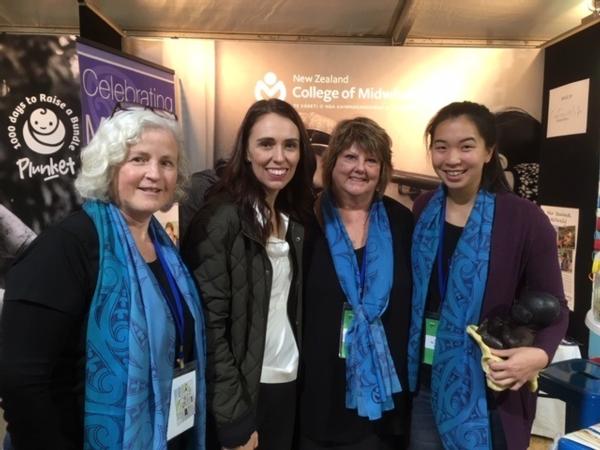New Film Highlights The Importance Of Supporting Aotearoa's World Class Midwifery Service
New Zealand midwifery is famous everywhere else except New Zealand.
That’s the comment from New Zealand College of Midwives co-founder, Karen Guilliland, at the start of the short film released today by Frank Film, and already viewed by more than 4500 people.
College of Midwives Chief Executive, Alison Eddy, says the feedback they have had from midwives everywhere about the NZ on Air funded film “New Zealand – the best place to give birth?” has been overwhelming.
“It’s a no-nonsense, clear, factual film about how important midwives are to the wellbeing of women and babies in Aotearoa,” she says. “We are thrilled with the way Frank Film has managed to encapsulate so many things we believe even our politicians don’t understand about what midwives do.”
Ms Eddy adds that Karen Guilliland who essentially narrates the film, shows how the profession was able to progress thanks in great part, to her passion, knowledge and drive to give women the right to choose what they do with their own bodies when it comes to pregnancy, labour and postnatally.
“As Karen says, midwifery is a fabulous job, however as we are all seeing, it is increasingly challenging. As well as midwives working up to a quarter of their time for no pay, we are still no further forward developing and implementing a new funding model for our community-based midwives, and we are still waiting for progress in pay negotiations for our employed midwives in DHBs after months of delay and lack of communication. We hope this short film will help communicate some of the issues we are still dealing with while underscoring how key midwives and our midwifery-led maternity service is in New Zealand,” she says.
Ms Eddy also acknowledges midwife Anne O’Connor who introduces the viewer to some of the women she works with, one of whom highlights her wonderful experience having a baby in New Zealand after her first was born overseas.
“I don’t think those in power realise how lucky we are in New Zealand, and how the system we have needs better support and resourcing. Of course, we need to change some components, such as the funding mechanism, and urgent investment in meaningful support for our profession which will make the work sustainable and lift the pay rates of employed midwives to match their expert skillset. But we need to get on with it – as the film correctly states, midwives are burnt out and they don’t need to be; we have the solutions.”
Alison Eddy says the feedback following the Frank Film release today has underscored one key thing:
“We are midwives together, working in the community and in DHBs, with women and babies at the centre of what we do. Let’s all work together to strengthen our midwifery-led maternity service, supporting women and their whānau on their life-changing journey. I hope this film goes some way in communicating what we do, how we do it and how important midwives are in Aotearoa.”
-Ends-
www.midwife.org.nz
Additional The case for midwifery: the potential of midwives for improving quality of care (World Health Organisation)
• 83% of all maternal deaths, stillbirths and newborn deaths could be prevented with the full package of midwifery care (including family planning);
• 62% of effective practices within the scope of midwifery show the importance of optimising the normal processes of childbirth and early life, and empowering women to care for themselves and their families;
• 56 maternal and neonatal outcomes were found to be improved through midwifery practice and philosophy of care;
• 87% of service needs can be delivered by midwives, when educated to international standards;
• 82% reduction in maternal mortality possible with universal midwifery coverage;
• Midwifery is associated with more efficient use of resources and improved outcomes when provided by midwives who are educated, trained, licenced and regulated in international standards. Midwifery is a ‘best buy’ investment:
• Midwifery is associated with reduced maternal and neonatal morbidity, reduced interventions in labour, improved psycho-social outcomes and increased birth spacing and contraceptive use;
• Community based midwives have been found to rank positively for economy, efficiency and effectiveness;
• Midwifery should be considered a core part of universal health coverage. Quality midwifery care is central to achieving national and global priorities and securing the rights of women and newborn infants;
• Quality relates to the right for women and newborns to the highest standard of health and is synonymous with women-centred care. Providing quality care is most efficient through midwifery care for all childbearing women;
• There were no adverse outcomes associated with midwife-led care but significant benefits, thus it is recommended that all women should be offered midwife-led continuity models of care;
• Case-loading midwifery care is safe and cost effective;
• Midwives have the potential to provide excellent quality of care but socio-cultural, economic and professional barriers must be overcome to allow them to practice to their full potential.
Continuity of Midwifery Care and outcomes – a synopsis
Internationally, there is increasing recognition that continuity of midwifery care is best practice for all pregnant women. The evidence is clear that there are numerous health benefits for women and babies, and the cost of continuity of midwifery care is significantly less than that of standard care.
Continuity of care midwifery care is defined as where the midwife is the lead maternity professional who plans, organises and provides maternity care from the time of confirmation of pregnancy through labour and birth and into the postnatal period.


